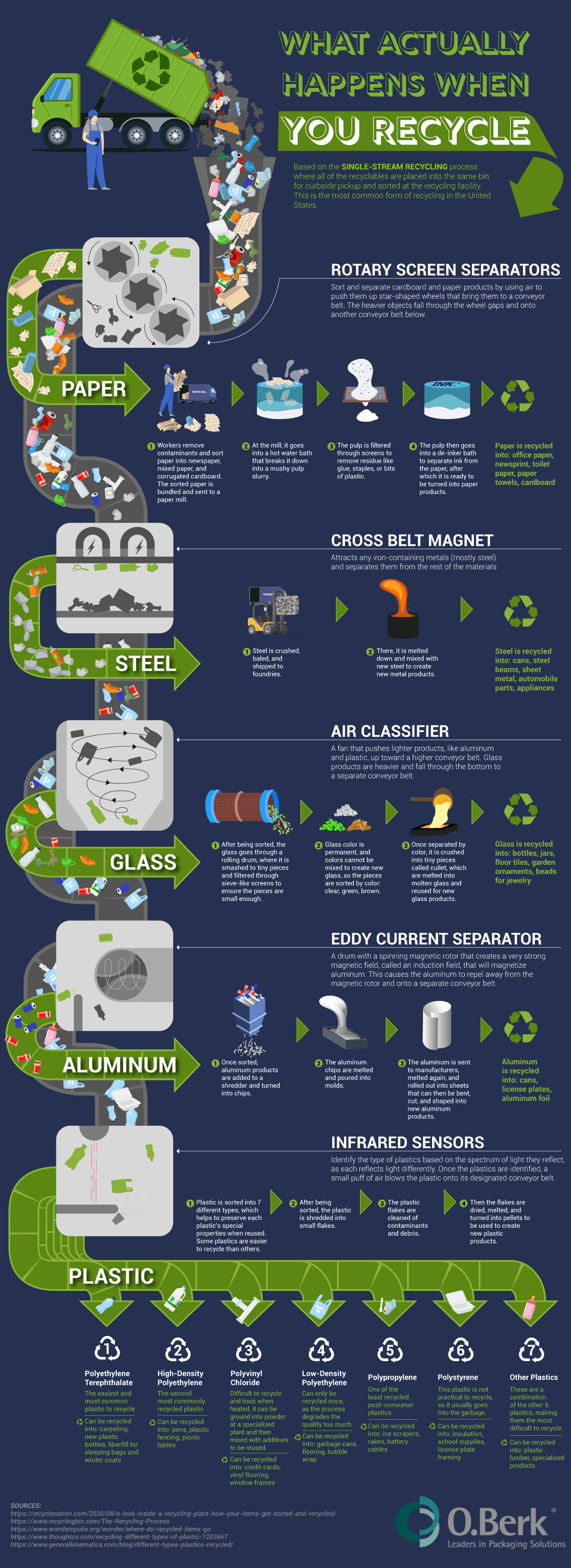Misc Visuals
What Really Happens When You Recycle?
Most of us do our best to recycle when we can. From cardboard boxes to plastic drink containers, doing our part to recycle reduces waste and helps protect our planet. Is what we’re doing enough to offset the impact of wasteful materials on the environment? And how does single-stream recycling really work?
The visualization below created by O.Berk outlines what happens after you put paper, plastic, aluminum, and steel in the recycling bin.
Click below to zoom
The graphic utilizes a flow chart to visualize how different materials are recycled based on a single-stream recycling process, which is where recyclables of all different types are placed in the same bin and sorted later at the facility. There are a number of processes that help sort materials at the recycling center:
-
- Rotary screen separators help to sort paper products by pushing them up to wheels with air. The paper products stay up while the heavier objects fall to another conveyor belt underneath.
-
- Cross belt magnets attract steel and other iron-containing metals to separate them from the rest.
-
- Air classifiers are fans that push light products (such as plastic and aluminum) towards a conveyor belt above. Glass products fall to a conveyor belt below where they are then recycled.
-
- Eddy current separators are spinning drums that create magnetic field that helps magnetize aluminum and push it towards a conveyor belt.
-
- Infrared sensors use light reflection to determine different types of plastics. Then, a puff of air helps push them onto the correct conveyor belt based on the number indicated on the product.
